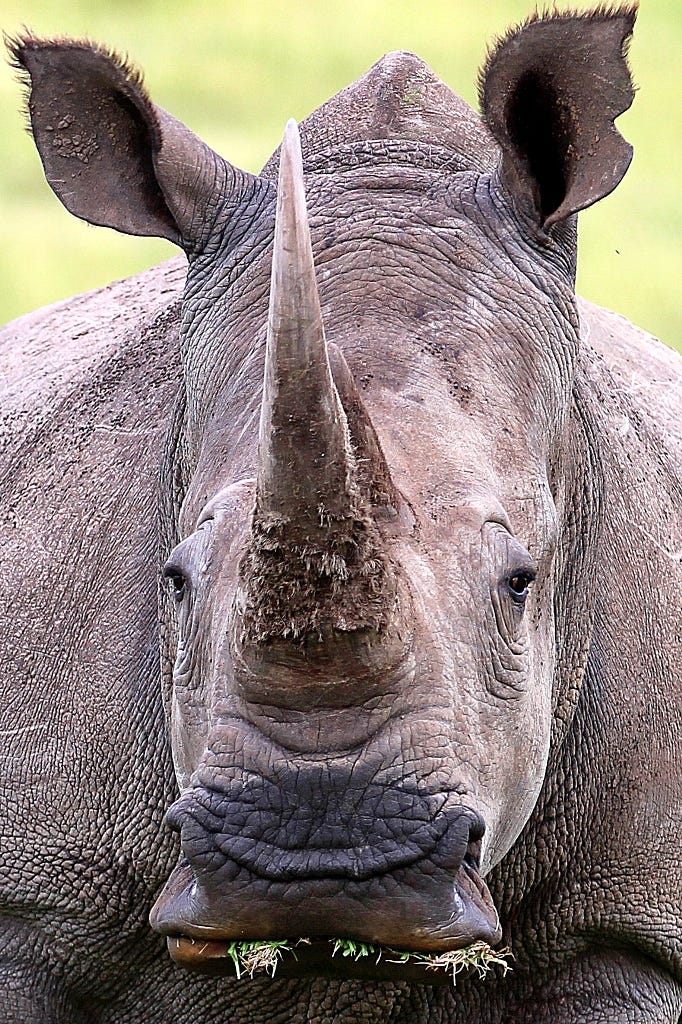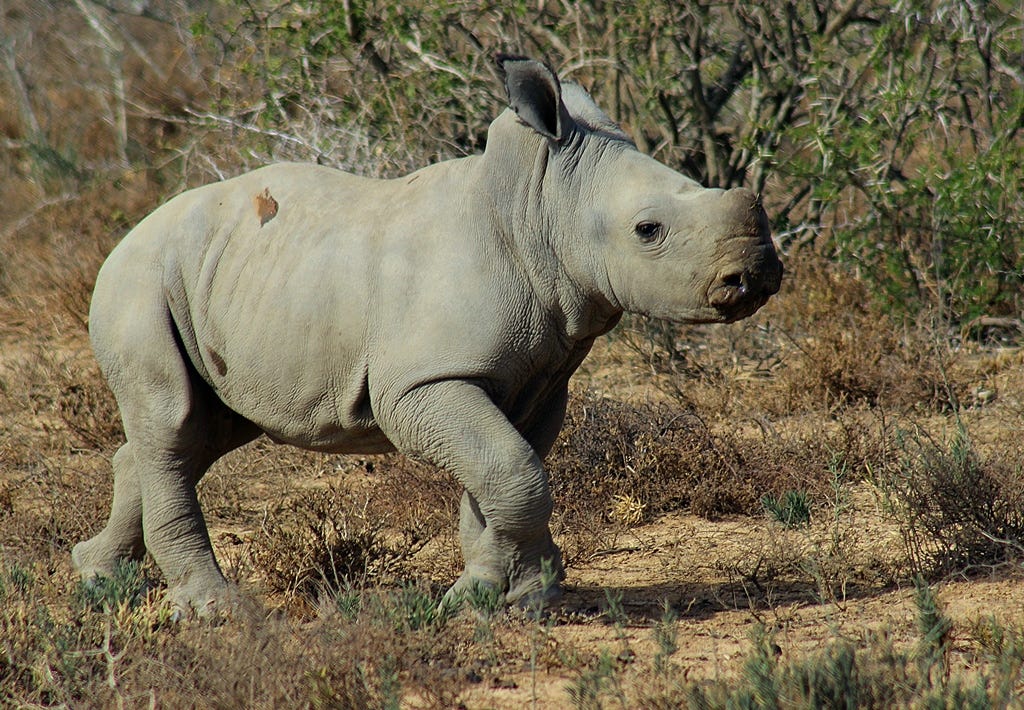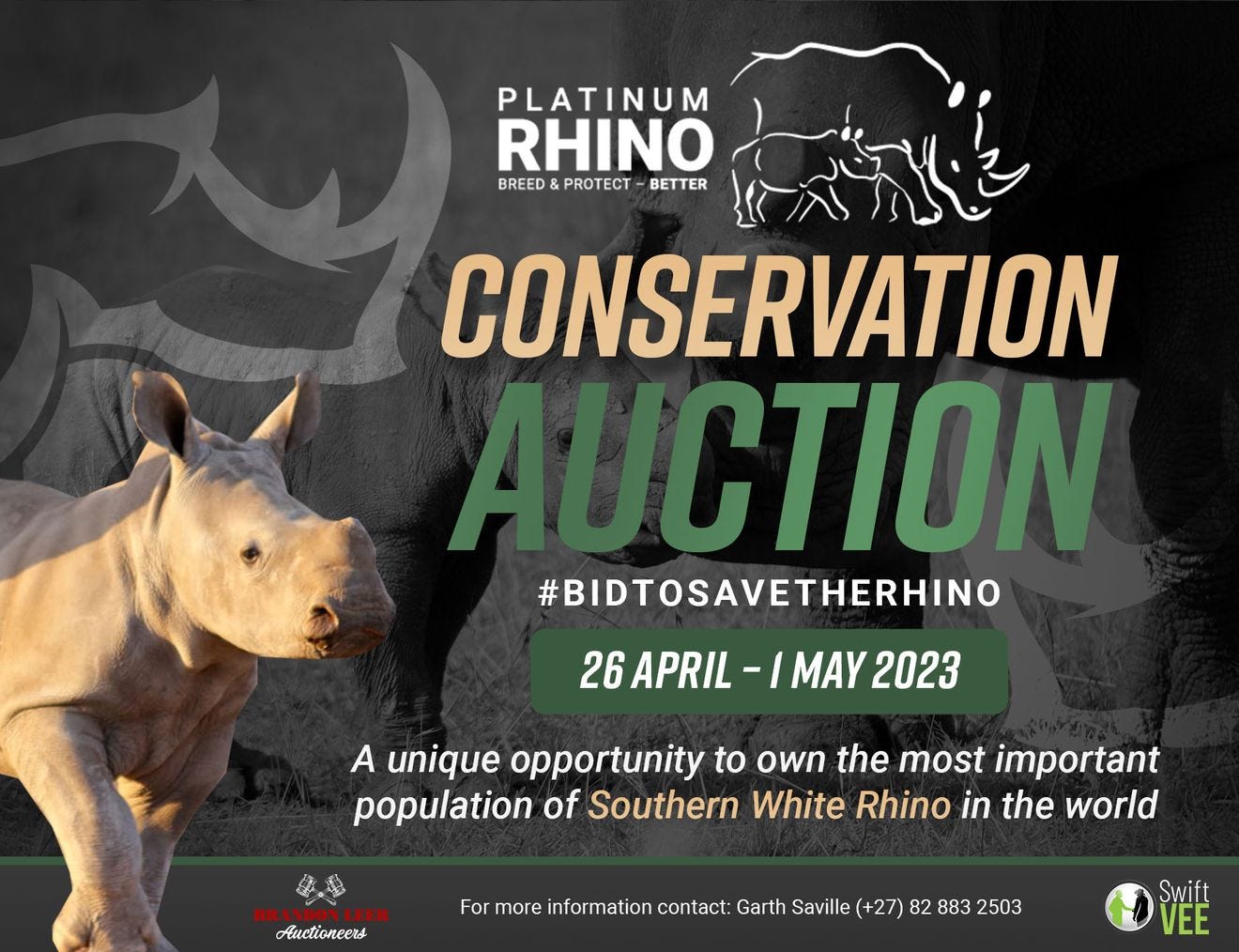Real Safari newsletter marks World Rhino Day on September 22 with this edition devoted exclusively to the white rhino.
Seeing a rhino in the wild is an exciting experience. Sometimes you get to see them, but very often you don’t. That unpredictability is part of the excitement – knowing that you are looking at a rare animal in its natural environment is a privilege that most people in the world will never have.
People visit game reserves for their own reasons. It’s about seeing rare animals, unusual behaviour and taking photographs. For some, it can be a type of wildlife bucket list. Seen that – let’s move on.
Personally, photography is a big part of why I cajole my wife into making yet another trip to a game reserve as often as I can. The problem is with rhinos. It’s considered bad form to post photos of rhinos online because poachers may find out where they are. Many Facebook pages expressly prohibit the posting of rhino photos. The admins take rhino pictures down immediately and threaten to expel those who are endangering the precious animals.
This is a problematic issue because private game lodges survive by hosting guests who come to take photographs. They can hardly tell clients, who have paid huge amounts of money for their safari, not to post their pictures of rhinos.
I am torn between wanting to show off my photos of rhinos and not endangering the lives of these animals. When I do post photos of rhinos such as the ones on this page, I make sure never to give away their location.

The privilege of viewing rhinos in their natural environment came horrifyingly close to disappearing forever as hunters in the 19th and 20th centuries shot these imposing creatures to within a hair breadth of extinction. According to some estimates less than 50 southern white rhinos survived the carnage by the 1930s.
It was only the foresight of a few dedicated conservationists that saved the world’s second biggest land animal from complete annihilation. They set up protected areas in the north of KwaZulu Natal and were able to breed a sustainable population that saw numbers steadily growing until the early part of this century when poaching once again got out of hand.
It is estimated that there were about 20,000 rhinos spread through national and private parks in South Africa by the turn of the century, but by 2012 that number had plummeted by more than 30%. Poachers supplying horns to lucrative markets in the Far East were using high powered weapons and sophisticated equipment to kill rhinos and take their horns.
The carnage has had a number of knock-on effects beyond the obvious decimation of rhino populations throughout Southern and Eastern Africa. One of these consequences is the diminishing interest from game lodges in keeping rhinos on their reserves. There is little incentive to have rhinos that could attract well-armed poachers to your property.
Reserves with rhinos have found themselves under increasing pressure to set up anti-poaching units (APU) to combat the illegal hunting of these animals. APUs are expensive to organise and maintain, requiring trained personnel, weaponry, infrared equipment, flak-jackets, vehicles and drones.
It has become a high-stakes arms race between poachers and conservationists.
As the cost of having rhinos has increased, so their market prices have dropped. Not so long ago they used to be the most expensive animals at regular game auctions, now they are hardly ever put on the block.
What to do with 2,000 rhinos?
Earlier this month, African Parks, a conservation NGO announced that it had purchased the world’s largest captive rhino breeding operation. More than 2,000 white rhinos were being held for breeding purposes on a 7,800-hectare property in the North West province of South Africa. This single game farm known as Platinum Rhino accounted for 15% of the world’s remaining wild population.
African Parks declared that as the new owner of 2,000 southern white rhino it would rescue and rewild the animals to safe and well-managed protected areas across Africa.
Platinum Rhino was established in 2008 by John Hume, a hotel/property magnate who claimed he started the breeding programme because of his passion for rhinos. He said that since 2017 the game ranch had never lost a single rhino to poachers due to an extensive security system and a dehorning policy.
Although Platinum Rhino has been successfully breeding rhinos, Hume found that he could no longer afford to feed and protect the animals. The plan was to sell rhinos to game reserves in Southern Africa and sell the horns that he removed from the animals to buyers in the Far East.
Hume is already in his eighties and project was getting expensive so it was decided to put Platinum Rhino up for auction on April 26, 2023. The opening bid was set at $10 million for the 2,000 rhinos, all the land and installations for the entire project.
The auction came and went without receiving any bids and it was feared that liquidators would have to sell off the rhinos piecemeal.
Concerned conservationists feared that the biggest herd of rhinos in the world would be traded without any long term plan to maintain the genetic diversity of the species. This could undo much of the work of Platinum Rhino.
African Parks secured an endorsement from the South African government and funding from a range of donors to purchase the project with a view to rewilding the 2,000 rhinos over ten years.
The NGO says it will ensure that the rhinos go to “well-managed and secure areas, establishing or supplementing strategic populations, thereby de-risking the future of the species.”
The South African Minister of Forestry, Fisheries and Environment, Ms. Barbara Creecy congratulated African Parks and Mr. Hume “for reaching this important agreement which facilitates a conservation solution for the rhino currently in a captive facility”.
She explained that “Our Government is guided in our approach to conservation by the UN Convention on Biodiversity and our own white paper. In this regard we are ready to support African Parks and other partners with technical and scientific advice in developing a conservation solution that includes translocating the animals over a period of time to suitable parks and community conservancies in South Africa and on the African continent.”
Have a happy World Rhino Day – and may all the rhinos enjoy it too.
visit www.africanparks.org,










Thanks for the interesting article!